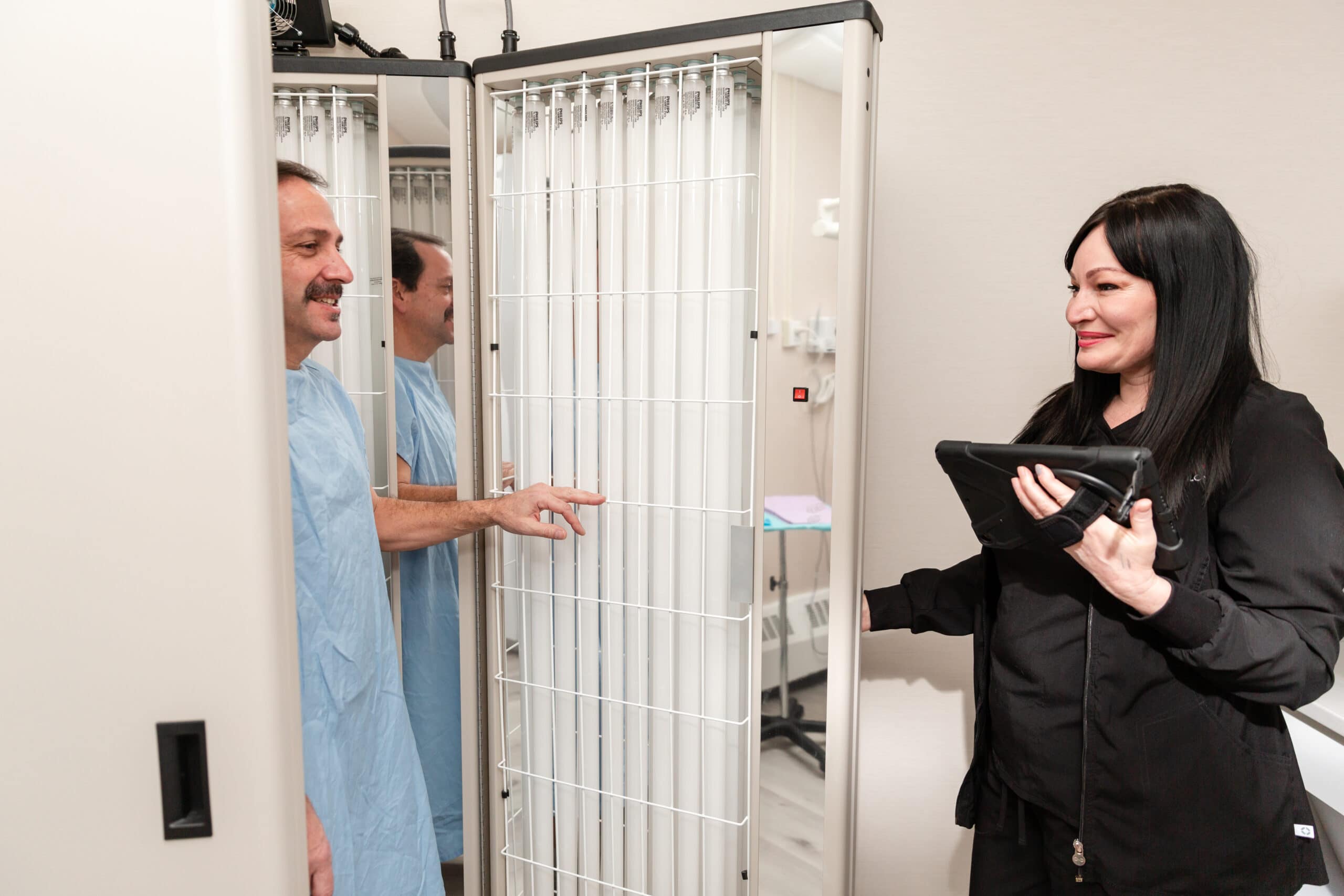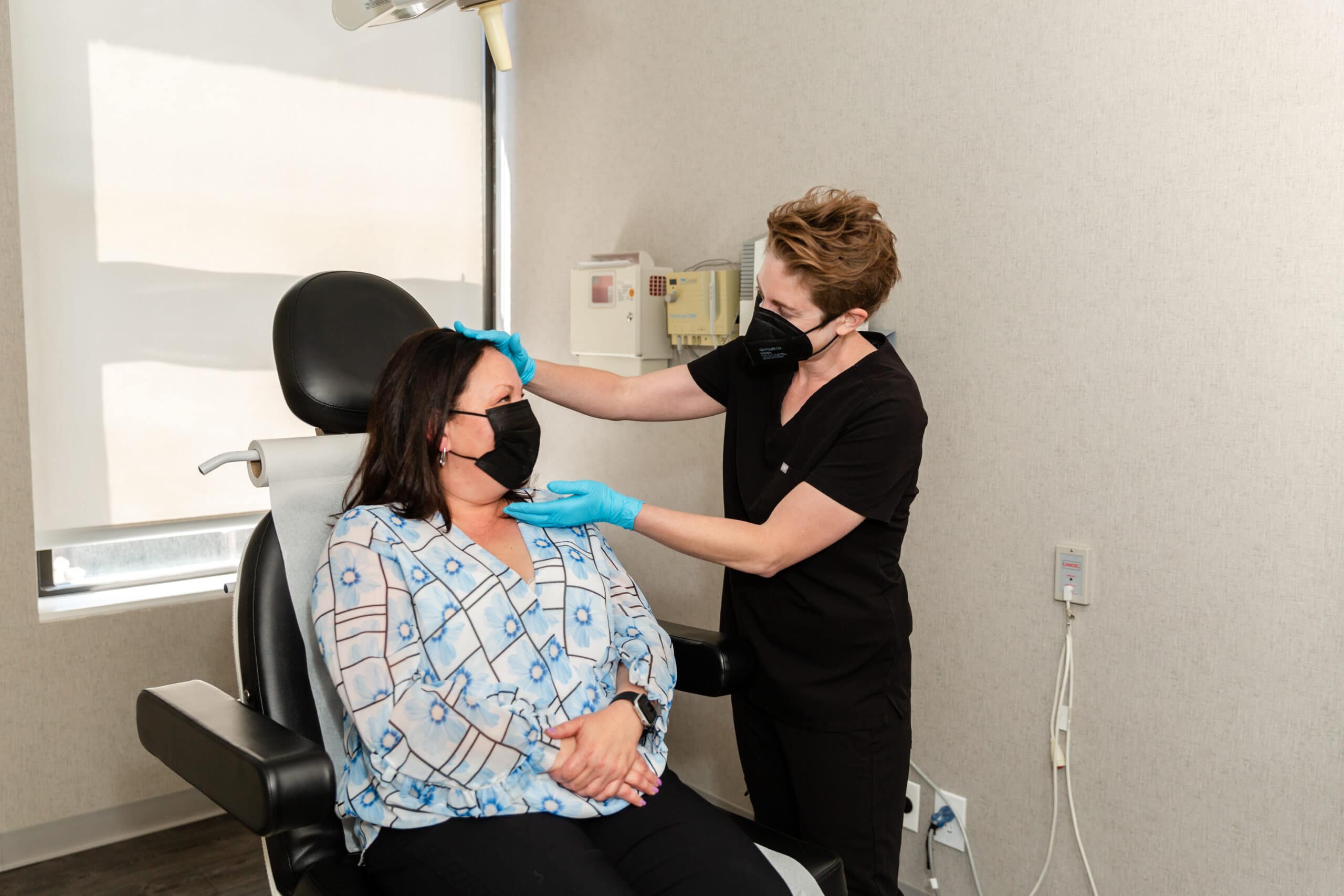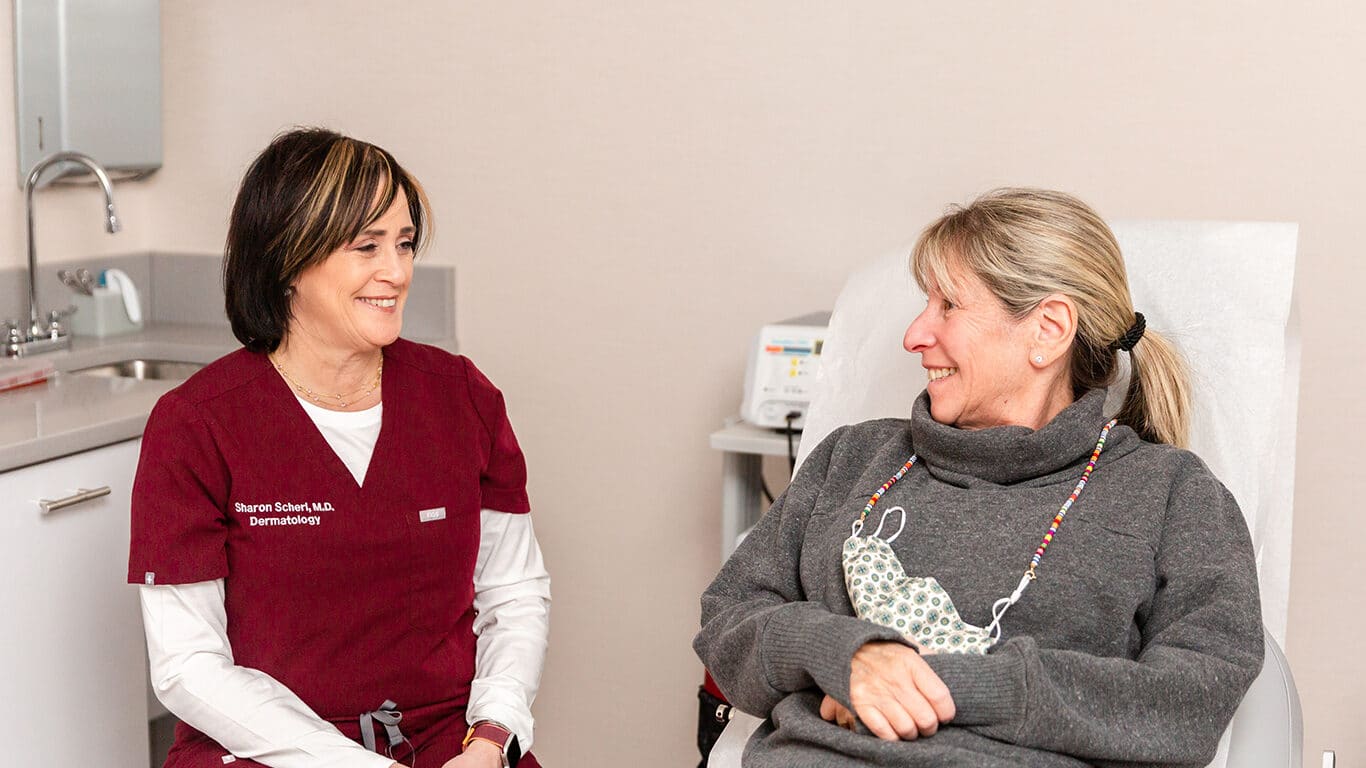
Phototherapy in Englewood Cliffs, NJ
Phototherapy is an innovative new treatment that uses ultraviolet light to target inflammatory skin conditions, such as psoriasis and eczema.
- Downtime: Minimal
- Pain Level: Minimal
- Results Duration: Long-Lasting
Treats:
Inflammatory skin conditions, including eczema and psoriasis
Side Effects:
Redness, dry, itchy skin
Location:
Primarily used on the face and body
Follow Up:
Some patients may need several sessions to achieve lasting relief
How Performed:
Lightbox directs light throughout the patient’s whole body or targeted areas
Preparation:
Topical anesthetic may be applied prior to treatment
Procedure Type:
Light therapy
Expected Outcome:
Reduction of inflammatory lesions
Onset:
Optimal results appear within weeks to months

The narrowband phototherapy lightbox is Scherl Dermatology’s latest innovative treatment. Carefully controlled, it is an extremely effective tool for treating inflammatory skin conditions such as psoriasis and eczema. Phototherapy can also be used in combination with other topical (applied on the skin) therapies.
Studies show that ultraviolet light is the source of the sun’s therapeutic effects. In fact, ultraviolet light can help treat the symptoms of common skin conditions such as psoriasis and eczema. So imagine what UV light can do when it is artificially produced, controlled, and given under supervision by an expert dermatologist.
What Can Phototherapy Treat?
Dr. Scherl Introduces the
Narrowband Lightbox
Phototherapy works by reducing skin inflammation and slowing down the growth of skin cells. Phototherapy is also called light therapy or ultraviolet light therapy.
At Scherl Dermatology, we use Phototherapy to treat skin conditions such as psoriasis, eczema, and itchy skin.
While phototherapy does not cure any of these skin conditions, it can successfully help you manage your condition and improve your quality of life.
Phototherapy works by:
- Reducing inflammation and promoting healing
- Reducing or eliminating itch
- Boosting the skin’s bacteria-fighting functions
- Increasing vitamin D production
- Slowing down rapidly growing cells
The success of phototherapy treatments will depend on consistency. Treatment will need multiple sessions to become effective. Phototherapy is just one of several treatments we offer for these conditions. Our options range from topical medications and moisturizers to systemic treatments that can include pills or injections.
Phototherapy Procedure
Once inside the lightbox, light will be activated to treat your entire body or just certain exposed areas. Your first treatment is usually a short one (a few seconds). Treatment will also depend on your skin type, age, condition, and the strength of light chosen by your doctor. Phototherapy rarely lasts longer than a few minutes. Records of your response to the light will be kept, and light will be slowly increased with each of your succeeding treatments.
Initially, most patients will need treatment 2-3 times a week for a total of 20-30 treatments. After a few months, a weekly maintenance treatment will be recommended. Psoriasis and eczema may go into remission for some months before flaring up again.
Is Phototherapy Safe?
Phototherapy is considered a safe way to treat conditions such as eczema and psoriasis because the skin is being treated from the outside in. Any possible risks associated with phototherapy are minor and include mild sunburn or an itching or stinging sensation.
How Effective Is Phototherapy?
According to the National Psoriasis Foundation, 75% of people who undergo narrowband UVB treatments will achieve clear skin and have remission for up to 6 months.
The National Eczema Association also reports that about 70% of people with eczema get better with phototherapy. Some people find that phototherapy puts their eczema in a “remittive” or “quiet” state long past the end of the treatment.
LEARN MORE AT YOUR CONSULTATION IN ENGLEWOOD CLIFFS, NJ TODAY
Light is a powerful tool for healing the body, and phototherapy capitalizes on the power of sunlight to help heal your skin and make it look and feel its best. To learn more about how phototherapy can be used to address your skin condition, contact our office today and schedule a consultation.
OTHER Medical DERMATOLOGY
Mohs Surgery
Mohs surgery is the most effective treatment for certain types of skin cancer. Skin cancer is the most common type of cancer in the United States and around the world. While dangerous, skin cancer is treatable with early detection.
Photodynamic Therapy
Photodynamic Therapy (PDT) is a medical treatment that involves two steps: the use of a light-sensitive drug and the application of a light source to destroy abnormal cells.
Barnacles
Barnacles are a very common benign growth. See your dermatologist if you are concerned, because skin cancer can sometimes look similar to a seborrheic keratosis to an untrained eye.
Moles
It is usually quite easy to remove moles surgically. Usually there is a trade involved – removing the mole in exchange for a small scar. If the mole is large and the scar will be less noticeable, then it is a good trade.
Rosacea
Many people suffer from rosacea. It is not contagious, but there is some evidence to suggest that it is inherited. There is no known cause or cure for rosacea.
Rash
“Rash” is a general term for a wide variety of skin conditions. A rash refers to a change that affects the skin and may appear as a red patch, small bumps or blisters on the skin.
Warts
Warts (Verrucae) are common growths that are caused by the Human Papilloma Virus (HPV). These can commonly involve the fingers, hands, feet, while certain strains can cause genital warts.
Skin Growths
REMEMBER you may have multiple types of bumps and bumps and some that may not be listed here:
- Small, hard, white bumps (milia)
- Enlarged oil glands (sebaceous hyperplasia)
Psoriasis
Psoriasis is a common inflammatory skin disease characterized by itchy or sore patches of various sizes. Often theses patches of skin have, silvery scales.
Thousands of People in the Metro Area Trust Scherl Dermatology
CONTACT US
Scherl Dermatology
Englewood Cliffs, NJ 07632
Same-Day Appointments Now Available


CONTACT US
Scherl Dermatology
140 Sylvan Ave. Suite 302,
Englewood Cliffs, NJ 07632
Same-Day Appointments Now Available
Scherl Dermatology
©2024 Schweiger Dermatology Group. All Rights Reserved. Privacy Policy | The information available on this website is provided for informational purposes only. This information is not intended to replace a medical consultation where a physician's judgment may advise you about specific disorders, conditions and or treatment options. We hope the information will be useful for you to become more educated about your healthcare decisions. If you are vision-impaired or have some other impairment covered by the Americans with Disabilities Act or a similar law, and you wish to discuss potential accommodations related to using this website, please contact us at 201.568.8400 .

